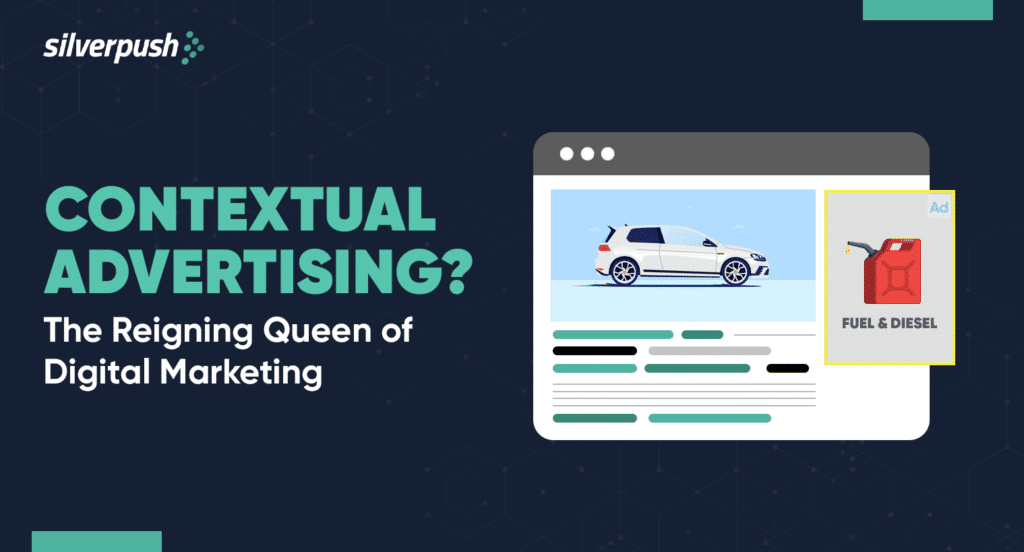As the digital landscape becomes more crowded and competitive, businesses always seek ways to stand out and connect with their target audience. One powerful strategy that has emerged in recent years is contextual advertising.
But before we delve into what contextual advertising is and why it’s considered the queen of contextual advertising, it’s important to understand the difference between context and content.
Context Vs Content in Digital Advertising
While the terms “content” and “context” might seem similar, there is a fundamental difference between the two.
Content refers to the process of creating and editing materials for digital marketing purposes, such as blog posts, videos, and podcasts, while context is the situation in which the content is presented, providing meaning and clarity to the desired message.
Over 25 years ago, Bill Gates first stated that “Content is King” in a post on the Microsoft website. Today, content still reigns supreme, as we live in a world where digital content bombards us every minute. The average person spends about 145 minutes per day on social media sites and a staggering 6.3 hours per day consuming digital media.
However, in the current landscape, where companies are vying for consumer attention, creating relevant content alone might not be enough to differentiate from competitors. This is where context becomes critical in contextual advertising. By leveraging contextual information like user location, device, and browsing history, brands can anticipate the needs, wants, and expectations of their target audience and create more personalized and direct advertising. As a result, contextual advertising has become the queen of digital marketing, providing businesses with a powerful strategy to stand out from the crowd and connect with their audience.
What is Contextual Advertising?
Contextual advertising is a type of online advertising that targets ads to users based on the content they are currently viewing or searching for. This approach leverages the power of context to deliver ads that are relevant and timely, increasing the chances that users will engage with them.
Examples of Contextual Advertising
To gain a better understanding of contextual advertising have a look at these examples:
- If you’re reading a movie review site, you could see ads like “purchase movie tickets” or “join up for a movie streaming service.”
- Before watching a YouTube video lesson on “how to cut your hair”, you view an ad for “shampoo”.
- If you’re browsing a travel website, you might see ads for hotels and flights to the destination you’re researching.
- If you’re reading a recipe blog, you might see ads for cooking utensils and ingredients used in the recipe.
Why is Context Considered the Queen of Advertising?
Why is context so important? The answer lies in the way we consume information and make decisions. As humans, we rely heavily on context to make sense of the world around us. We use contextual cues to filter out irrelevant information and focus on what is important to us at any given moment.
When it comes to advertising, context is just as important. By understanding the context in which users consume content, businesses can tailor their ads to resonate better with their target audience. For example, if a user is browsing a cooking website, an ad for a kitchen appliance or recipe book is much more likely to be effective than an ad for a car or a fashion accessory.
Benefits of Contextual Advertising
The benefits of contextual advertising are many.
- First and foremost, it is highly effective at reaching the right audience at the right time. By targeting ads to users who are actively engaged with relevant content, businesses can achieve higher click-through rates and conversion rates than traditional forms of advertising.
- Contextual advertising is also more cost-effective than other forms of advertising. Because ads are only shown to users who are actively engaged with relevant content, businesses can avoid wasted ad spending on users who are unlikely to be interested in their products or services.
- Another benefit of contextual advertising is that it is less intrusive than other forms of advertising. Because ads are integrated seamlessly into the user’s browsing experience, they are less likely to be perceived as annoying or disruptive. This can help to build trust and goodwill with users, leading to stronger brand loyalty over time.
Challenges of Contextual Advertising
Of course, there are some potential downsides to contextual advertising as well.
One risk is that ads may be displayed next to content that is controversial or objectionable, leading to negative associations with the brand. To mitigate this risk, it is important for businesses to carefully select the types of content they want their ads to be displayed alongside, and to regularly monitor and adjust their campaigns as needed.
Conclusion
Contextual advertising remains a powerful tool for businesses looking to connect with their target audience in a meaningful way. By leveraging the power of context, companies can deliver highly targeted and effective ads that resonate with users and drive actual results.
